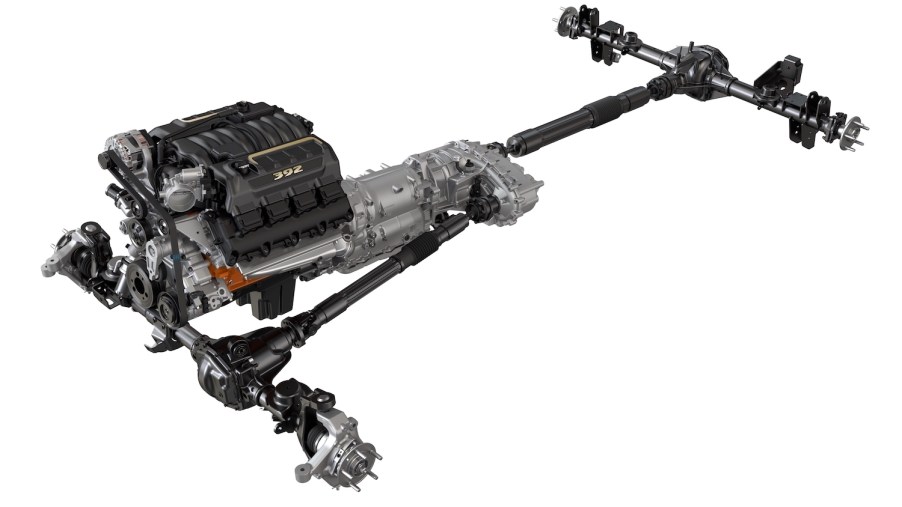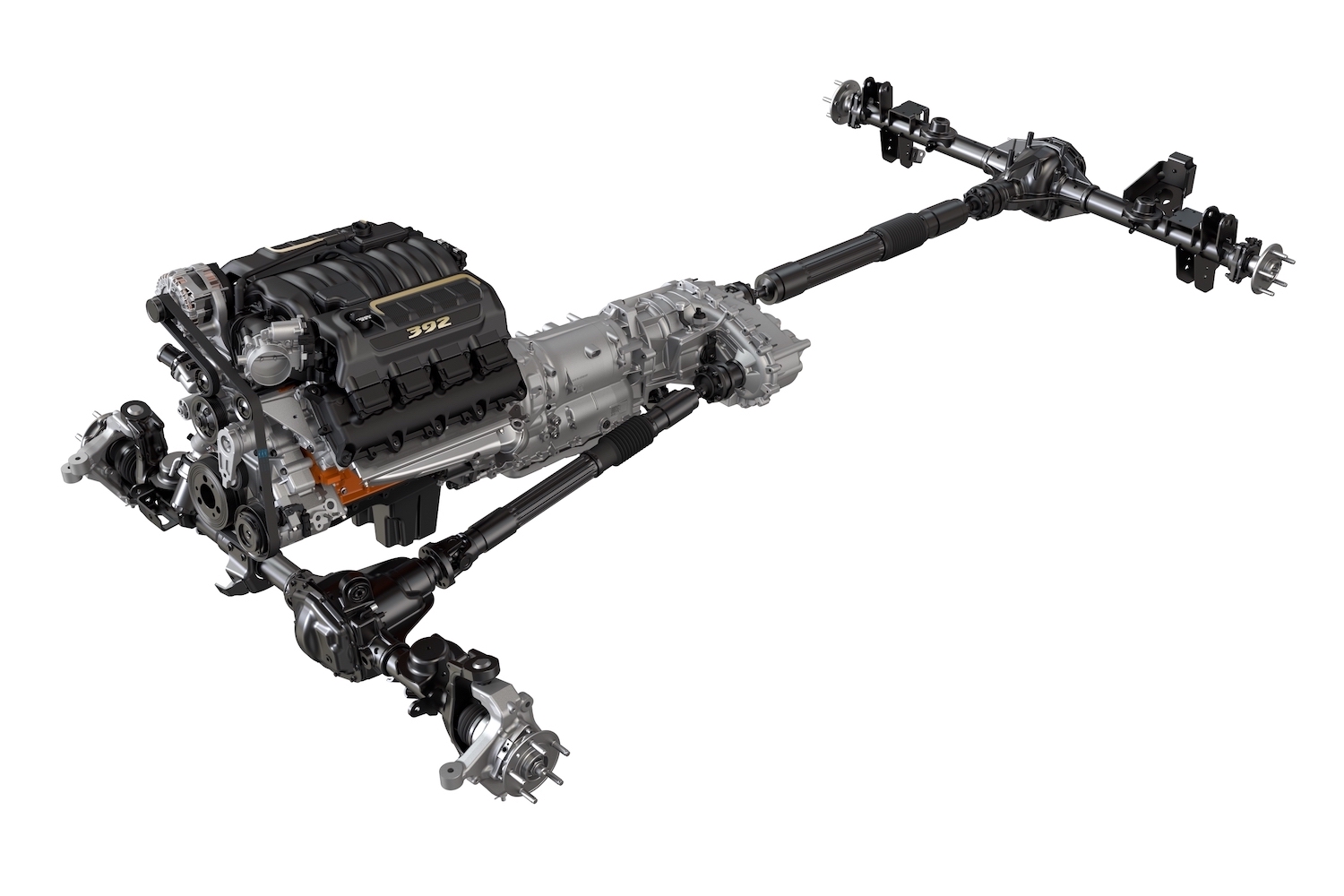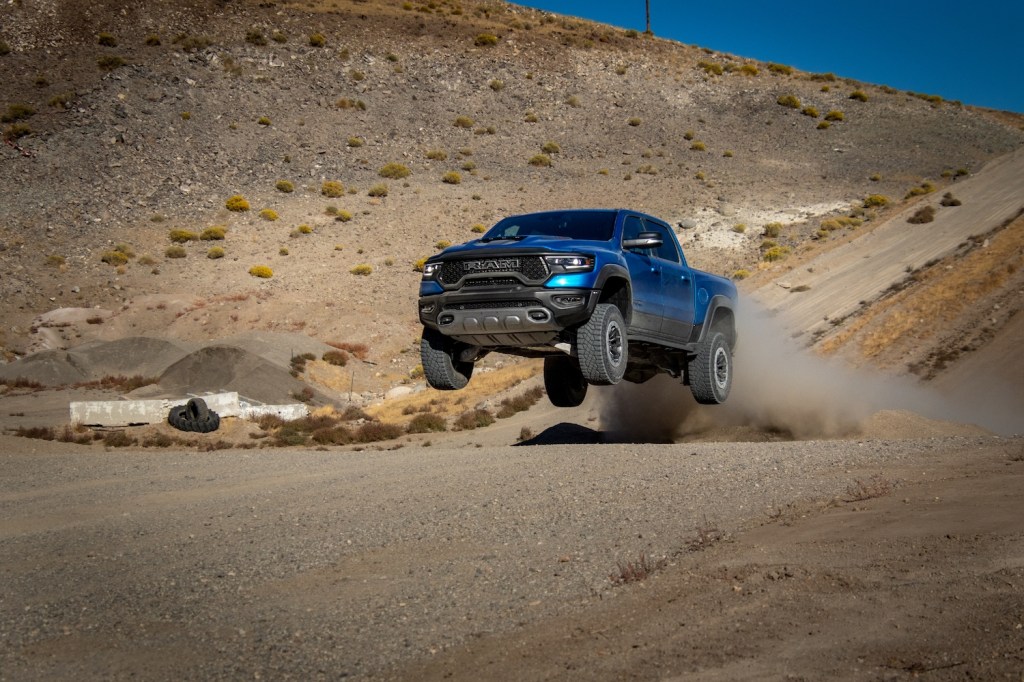
Full Time 4WD vs AWD
Several new trucks and SUVs come with full time four-wheel-drive (4WD) drivetrains. The label confuses many because full time 4WD sounds a lot like all-wheel-drive (AWD). But the two names usually designate different drivetrains. Here are the nuanced differences between full time 4WD and AWD 4×4s.
What does full time 4WD mean?
Automakers now advertise full time 4WD systems. You can usually find these drivetrains in trucks or SUVs that offered, until recently, only part-time 4WD.
Certain models or trim levels feature “full time” 4WD. These vehicles still have a range selector lever, or a knob, connected to the transfer case. But instead of 4Hi, 4Lo, and 2Hi, the driver can only choose between 4Hi and 4Lo.
Full Time 4WD usually offers Hi/Lo ranges, AWD usually does not

There is no official definition of full time 4WD. The World Automotive Congress actually met back in 2000 to establish definitions for new drivetrain technology. But the officials did not distinguish between AWD and full time 4WD.
That said, automakers are using AWD and full time 4WD to describe very different systems. Most every vehicle advertised as full time 4WD offers a traditional Hi/Lo range, just like most part time 4WD vehicles.
“Differentiating true 4WD systems from nearly all of the other types is the fact that they come equipped with a special secondary ‘low’ gearing ratio for driving very slowly in rugged terrain. Many also feature locking differentials.”
J.D. Power
J.D. Power actually says that the Hi/Lo range differentiates full time 4WD from systems such as AWD. The full time 4WD label is effective because consumers familiar with part time 4WD expect a hi/lo range. It also has advertising benefits: some off-roaders consider AWD inferior, so full time 4WD may be a more palatable feature name.
Full time 4WD pros and cons

Full time 4WD’s main advantage over part time 4WD is that it is always active. There is no way to get caught unprepared by a low traction situation.
In addition, a 4WD system designed for highway speed has certain benefits. One of the reasons the new Ram 1500 TRX is nearly as fast as its Charger Hellcat cousin to 60 mph is its four-wheel traction.
But certain full time 4WD systems may also have drawbacks. A 2WD mode is a great way to save a little fuel on long trips. Also, front axle components on full time 4WD drivetrains may wear out faster than components on similar part time 4WD vehicles.
Conclusion: Is the phrase Full Time 4WD here to stay?
Currently, automakers usually us the phrase “full time 4WD” for trucks and SUVs that have swapped from part time 4WD drivetrains to AWD drivetrains. Because many of these vehicles also have a Hi/Lo range, this has become a defining attribute of full time 4WD. A minor reason may be that truck buyers consider AWD inferior, so full time 4WD is a better advertising phrase.
Will the phrase Full Time 4WD every be replaced by AWD or Hi/Lo AWD? There is a chance that future 4×4 enthusiasts will see AWD as a viable alternative to part time 4WD. In this case, automakers may begin badging full time 4WD as Hi/Lo AWD. In the meantime, when you see full time 4WD advertised, know you are looking at a vehicle with an AWD system that likely features a Hi/Lo gear selector, perhaps even a locking center differential–but it has no 2WD mode.



